
Population biology is a central field that integrates aspects of ecology, evolutionary biology, bioinformatics and mathematical modeling. UNL has strength in applied, basic, and theoretical population biology, addressing such diverse topics as modeling of population dynamics, population genetics, community diversity and structure, speciation, behavioral ecology, endangered species, invasive species, disease biology, and wildlife biology. The goal of our Program of Excellence is to add to that expertise, and thus increase intellectual collaborations and vibrancy across the UNL campus.
With our Population Biology Program of Excellence (PoE) Postdoctoral Fellowships, we are one of only a few universities to have post-doctoral fellowships that are not tied to a particular PI and grant. The goal of the Population Biology POE Postdoctoral Fellowship is to stimulate synergistic interactions between faculty and postdoctoral scholars interested in the broad area of Population Biology.
Appointed postdocs develop a single, coherent 2-year research project under the guidance of one, two or more faculty advisors, one of whom is in the Ecology, Evolution & Behavior (EEB) section in the School of Biological Sciences.
Current PoE Researchers Previous POE Researchers
Population Biology Postdoctoral Research Fellowship
The University of Nebraska-Lincoln is seeking applications for a 2-year postdoctoral position in the Population Biology Program of Excellence.
The goal of the Population Biology-POE Postdoctoral Fellowship is to stimulate synergistic interactions between faculty and postdoctoral scholars broadly interested in the area of Population Biology. We are seeking applicants who have recently completed, or will soon complete, their Ph.D. and who conduct cutting-edge research related to faculty research areas in the Ecology, Evolution & Behavior (EEB) section in the School of Biological Sciences (https://biosci.unl.edu/research-areas). POE postdoctoral fellows pursue a research program under the sponsorship of an EEB faculty member and are expected to enhance graduate education, serve as a model for graduate students in career development, and promote interactions among faculty at UNL. While in residence, the postdoctoral fellow is expected to lead a seminar, symposium, or outreach project that will appeal to Population Biologists across campus. Research descriptions for past and current POE postdoctoral fellows can be viewed at http://biosci.unl.edu/population-biology/.
The expected salary will be $45,000 per year. We anticipate notifying the successful applicant by April 30, 2024, with an expected starting date between August 1 and September 1, 2024.
EEB faculty at UNL are highly integrative and collaborative, using a wide array of approaches and study systems to study a diverse set of biological questions, from the molecular determinants of adaptation and speciation to multimodal animal communication to the community ecology of extinct mammals to the ecology and evolution of infectious disease. Lincoln is consistently rated as one of the best places to live in America, with a low cost of living, over 130 miles of bike trails throughout the city, and a vibrant restaurant and music scene.
A Ph.D. in Biological Sciences or a related field is required by the start date.
Review of applications will begin April 1, 2024 and will continue until the position is filled.To apply, interested candidates should go to https://employment.unl.edu, requisition F_240013. Click “Apply for this Job” and complete the Faculty Academic/Administrative Information form. Applicants will be required to upload a curriculum vitae, a one-page description of previous or current research, and a two to three-page description of proposed research. The research statements will need to be combined into a single document for upload.
In addition, please arrange for two recommendation letters from non-UNL faculty and one recommendation letter from the UNL faculty sponsor (a total of three letters) to be emailed to ccressler2@unl.edu. The research proposal should be developed in collaboration with the proposed faculty sponsor. Priority will be given to applicants who are new to UNL.
As an EO/AA employer, the University of Nebraska considers qualified applicants for employment without regard to race, color, ethnicity, national origin, sex, pregnancy, sexual orientation, gender identity, religion, disability, age, genetic information, veteran status, marital status, and/or political affiliation. See https://www.unl.edu/equity/notice-nondiscrimination.
Current Postdoctoral PoE Researchers
Lisa Treidel
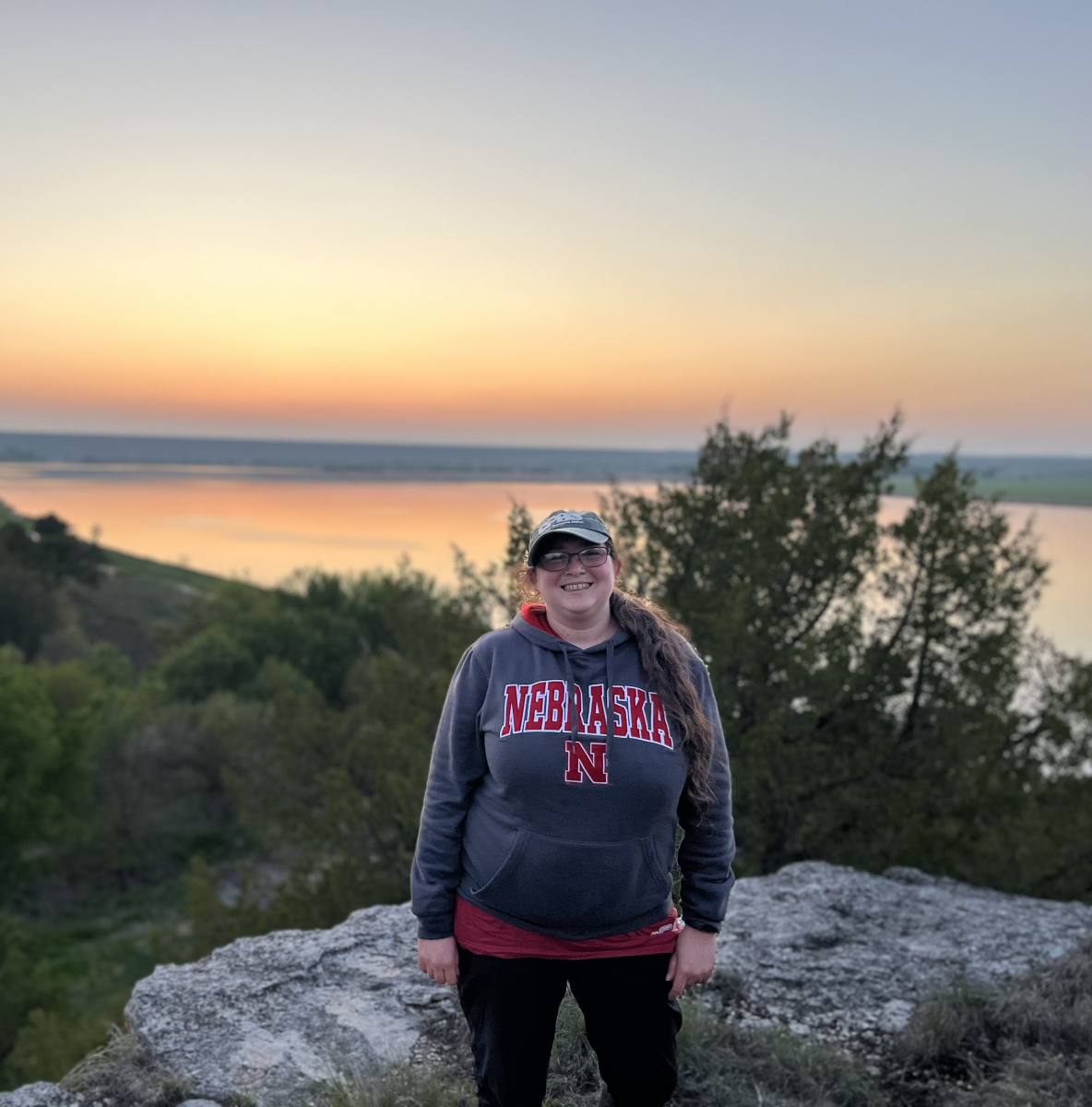
I’m an ecological and evolutionary physiologist, using integrative approaches to study the evolution of complex multivariate traits in animals, including life history and flight polymorphisms. My research leverages wing-dimorphic field (Gryllus) crickets, in which discrete flight-capable long-winged (LW) and flightless short-winged (SW) morphs co-occur within populations as a model, to provide mechanistic insight into how genetic, physiological, and environmental factors interact to facilitate or constrain the evolution of complex multivariate traits.
As a PoE Fellow, I’m working with Dr. Kristi Montooth and Dr. Colin Meiklejohn to study the quantitative genetic basis of wing morph determination in the variable field cricket (Gryllus lineacticeps). Using a family breeding design with crosses of all possible morph combinations (LW X LW; SW X SW; LW X SW; SW X LW), I will estimate heritability of wing morph and test for genetic correlations among flight related traits (wing length and flight muscle function), which could explain their coordinated evolution. In addition, working with Dr. John DeLong, I’m integrating my empirical work on the genetic basis of wing dimorphisms into a theoretical eco-evolutionary feedback model (Gillespie eco-evolutionary model (GEM)). The model will provide a suite of predictions about how the evolutionary trajectories of wing dimorphisms and morph frequencies in populations and species will shift in response to environmental changes and address broad fundamental questions about processes facilitating the maintenance or promoting the loss of polymorphisms in populations.
Kenna Lehmann
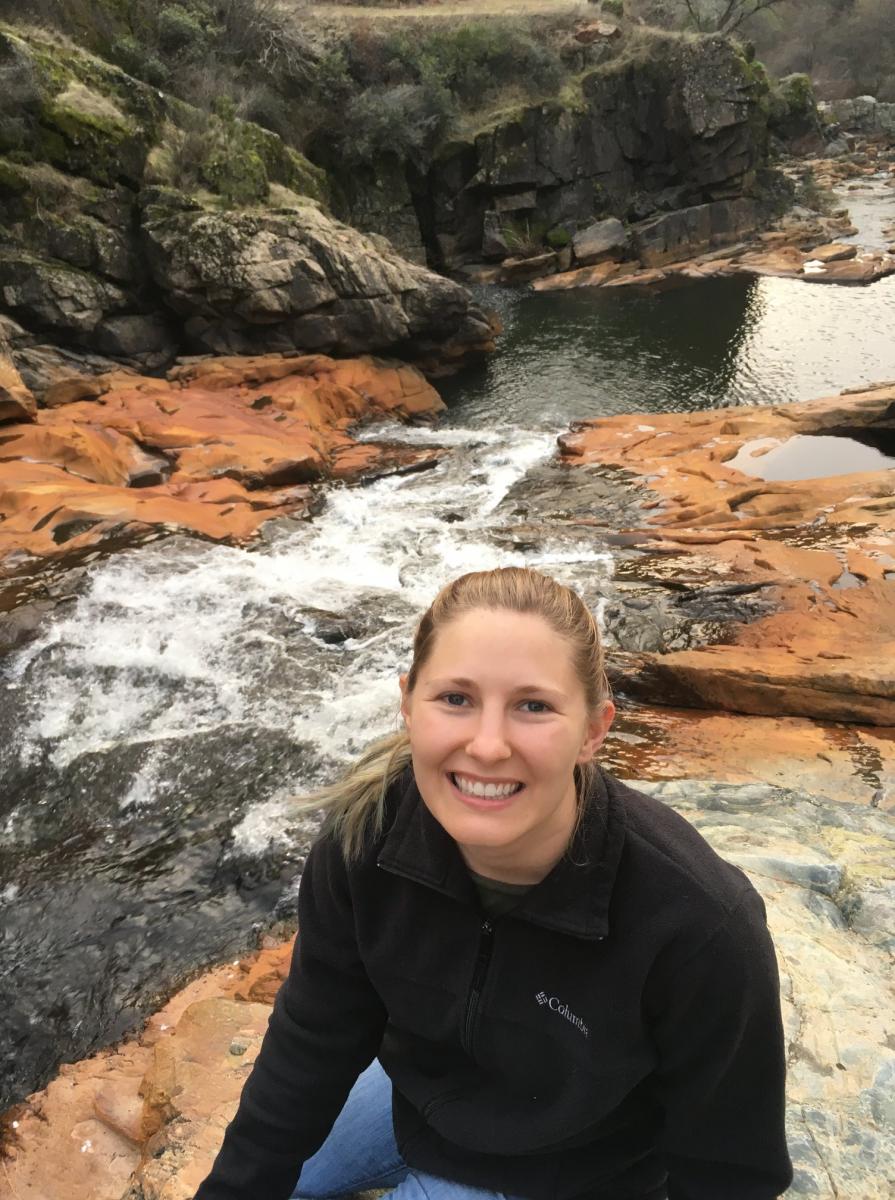
Hebets lab; website: https://
I study the interdependencies and connections among sociality, communication, and cooperation. Modeling suggests that communication and cooperation can be stabilized by social interactions. At the same time, we know communication reduces the potential costs of intergroup competition and cooperation is a way to realize the benefits of sociality. Further, a number of evolutionary hypotheses predict that complexity in one of these three leads to or requires complexity in another. My work uses observations of and experiments with wild and captive animals to tease apart the factors governing how these complex behaviors evolve and interact.
As a PoE Fellow, I am working with Dr. Eileen Hebets to study the cooperative hunting behavior of a social pseudoscorpion (Paratemnoides nidificator) and the neural development and intelligence of the amblypygid (Phrynus marginemaculatus). Paratemnoides nidificator lives in colonies, shares parental care, and hunts large insects. Their unique social structure allows us to ask questions about how social ties and communication signals affect their ability to cooperate to obtain food. From this, we can determine whether social bonds built up over time or signals emitted during hunting are more important for cooperation. Our work with P. marginemaculatus tests two popular hypotheses for the evolution of large brains in primates: environmental complexity and social complexity.
Previous Postdoctoral PoE Researchers
Will Gearty

Lyons lab; website: williamgearty.com
My research aims to better understand the constraints and drivers of evolution as our planet has changed through time. I integrate paleontological and neontological tools to investigate the evolution of various biological systems through time and test hypotheses regarding the constraints and drivers of that evolution. To date, I have focused on groups of land vertebrates that have invaded the oceans (e.g. mammals, crocodiles, and snakes), the physiological challenges that exist across that habitat transition, and how these animals have overcome these challenges.
As a PoE fellow, I will be shifting my primary focus to terrestrial mammals to investigate the constraints and drivers of body size variation at community and global scales. Previous research has shown that the physiological, environmental, and biotic constraints that are imposed on organisms result in optimal body sizes. However, closer inspection shows that variation, of multiple orders of magnitude, exists among mammals, even within smaller clades that share a niche. Why might species evolve towards non-optimal body sizes to produce the variance that we observe? I intend to investigate the various biotic and abiotic factors that may be resulting in more or less variance within communities and across the globe. I will also use the fossil record of Pleistocene mammals to compare how communities have changed with the introduction of humans. This work will provide us with a better understanding of how factors such as competition, diet, climate, and extinction work together or against each other to produce the body size distributions we see today and in the fossil record at both local and global scales.
Eli Strauss
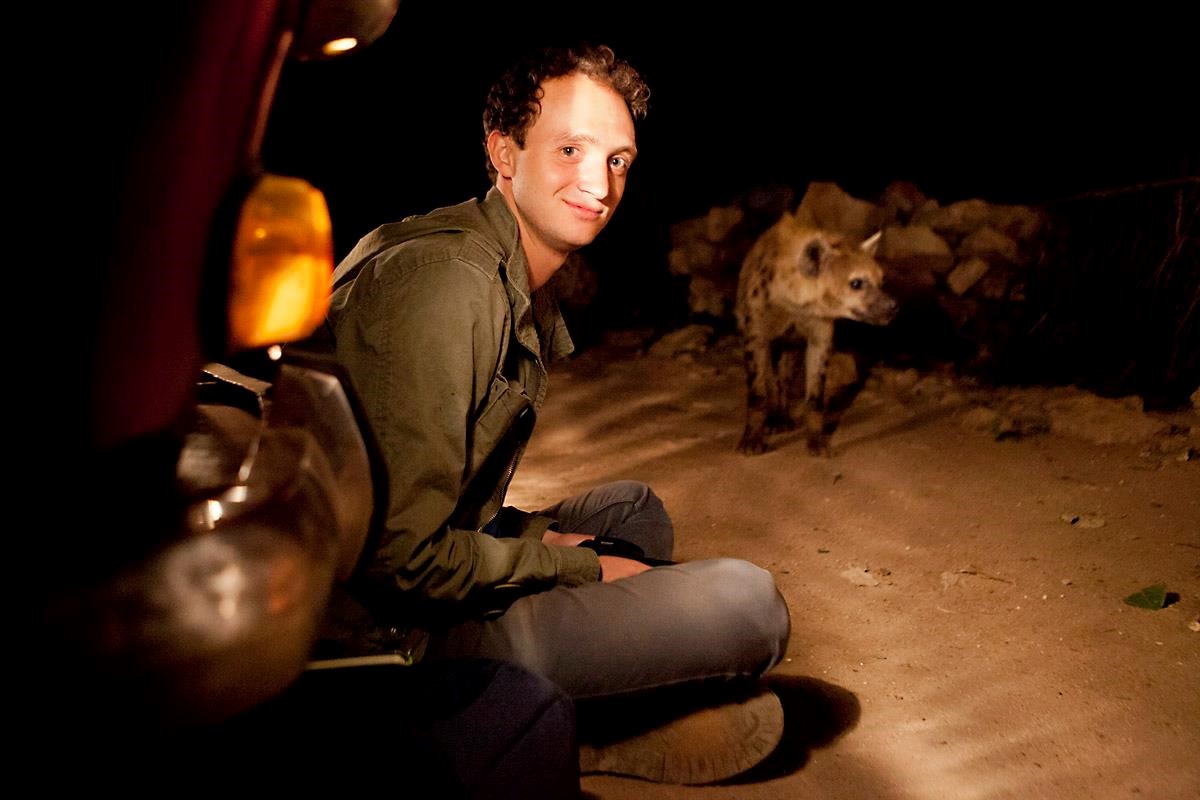
Shizuka lab; website: straussed.github.io
I am a behavioral ecologist interested in the role that social relationships play in ecology and evolution. A large body of evidence suggests that the social environment has crucial effects on fitness, and yet many questions remain regarding the mechanisms of this influence, the forces that produce particular social structures, the plasticity of social structure, and the interplay between the social environment and more traditional ecological forces (e.g., climate, trophic interactions). My research addresses these questions through the lens of social inequality, which is a strikingly consistent feature of both human and animal societies.
As a POE fellow, I'm working with Dai Shizuka to develop a framework for understanding social inequality as a biological phenomenon, with the goal of uniting the insights of animal and human-oriented disciplines in a shared framework. Across species, societies vary in the severity of social inequality, and highly unequal societies are associated with significant costs to disadvantaged individuals and, perhaps, to entire societies. Variance in access to resources and reproduction is a key ingredient of natural selection, but we know little about how the perpetuation of social inequality affects evolution. Why does social inequality arise in nature, and, importantly, why does it persist through generations? What makes some societies more unequal and/or less socially mobile than others? When do societies change in levels of inequality, and why? There have been efforts to tackle these questions from an evolutionary perspective within some contexts (e.g., reproductive skew theory), but a more general understanding evades us because it has been difficult to identify universal aspects of social inequality across species. The overall objective of my current work is to develop a general framework of social inequality to facilitate comparative study of social mobility and social inequality across species and societies. This approach will provide much needed insight into the ways that animal societies, including our own, conform to, or deviate from, general patterns of social inequality, and will deepen our understanding of the dynamics of social evolution.
Andrew Merwin
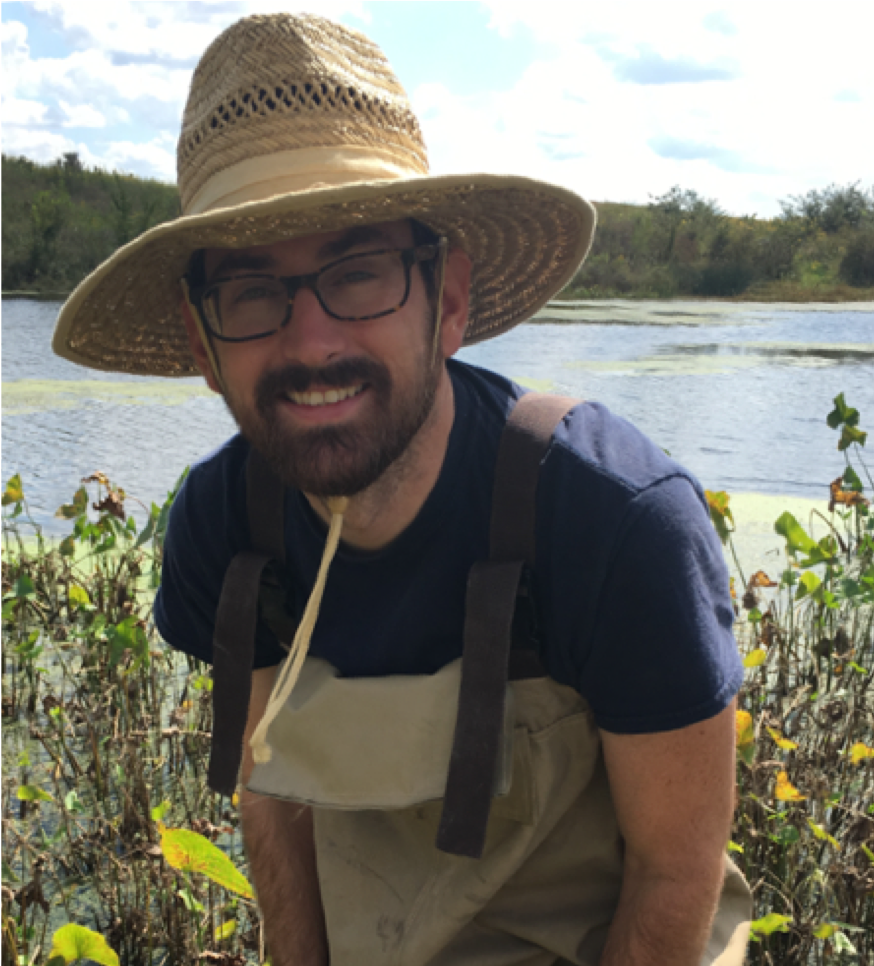
Ph.D. Florida State University, 2018
Current Position: Assistant Progessor of Biology at Baldwin Wallace University
My research focuses on how environmental variability and biodiversity influence plant-insect interactions. In particular, I’m interested in linking the organismal traits of plants and insects to population and community-level outcomes. To do this, I use experimental and observational approaches in the lab and field, along with mathematical modeling. This work is motivated by a desire to uncover basic ecological principles that can be applied to conservation, sustainable agriculture, and to better predict the dynamics of natural populations in a changing world.
As a PoE fellow, I am working with Chad Brassil to understand how temperature and variation in temperature influence insect herbivore population dynamics. Increasing ambient temperature often directly influences consumers by increasing development rates and fecundity until a threshold is met. Temperature can also indirectly influence consumers through its effects on their resources. While research on consumer-resource interactions has begun to incorporate temperature’s indirect effects on consumers through mechanisms such as phenological shifts, theory has yet to incorporate temperature’s indirect effects on consumers via changes to the quality of their resources. Because resource quality, not quantity, often determines the population dynamics of insect herbivores, this gap in theory leaves the most common macroscopic terrestrial consumers—insect herbivores—without a realistic predictive framework for predicting how warming should influence their populations. Using duckweeds and their common herbivore, Rhopalosiphym nymphaeae, we plan to experimentally disentangle the direct and indirect effects of temperature on insect life history traits and inspire theory to better predict herbivore population dynamics in response to global temperature change. .
PoE Advisor: Chad Brassil
Shabnam Mohammadi
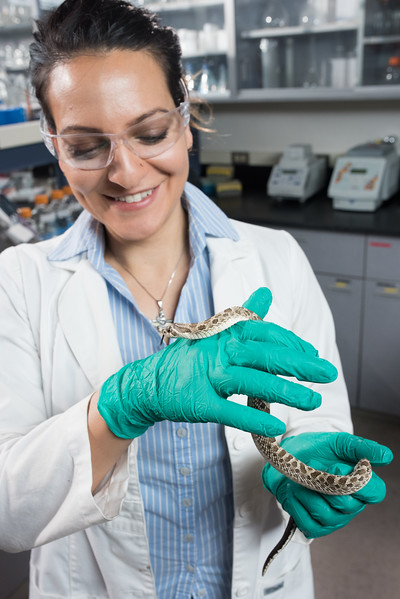
Ph.D. Utah State University, 2017
Current Position: NIH NRSA postdoctoral fellow at UNL in the Storz Lab
My research interests are focused on identifying specialized adaptations in organisms and understanding how they work and how they evolved. I consider myself a highly collaborative and integrative biologist, and I explore research questions that cut across traditional disciplinary boundaries. Consequently, I design my studies to investigate broad-scale patterns of organismal evolution as well as mechanisms of adaptation at different hierarchical levels of biological organization, from organismal physiology to molecular function. Currently, I am applying this interdisciplinary approach to researching the mechanisms of toxin resistance in predators of toxic prey.
My research as a PoE fellow is aimed at using the predator/toxic prey system to answer fundamental questions of evolution. For example, how do novel phenotypes evolve in an incremental, step-by-step fashion? Specifically, I am investigating a protein adaptation that allows certain species of snakes to feed on toxic toads. Toads synthesize potent cardiotonic steroids known as bufadienolides. These toxins exert their effect by inhibiting ion transport by the Na+/K+-ATPase. Inhibition of this ubiquitous transmembrane protein leads to a cascade of intracellular ion imbalances, which are lethal in most organisms. Molecular resistance to bufadienolides in snakes has been attributed to two amino acid substitutions in the Na+/K+-ATPase. As a PoE fellow I am working on better understand how this adaptation evolved by statistically reconstructing ancestral Na+/K+-ATPase sequences in a phylogenetically broad sample-set of snakes and experimentally “resurrecting” ancestral proteins at keys points in evolution using a protein engineering approach. I plan to utilize the “resurrected” proteins to assay bufadienolide sensitivities and functional efficiencies. With these data I can trace the trajectory of change in bufadienolide resistance in all mutational intermediates that connect the ancestral (sensitive) Na+/K+-ATPase and the descendant (resistant) Na+/K+-ATPase in the common ancestor of bufadienolide-resistant clades. This work will provide a complete genetic and physiological reconstruction of the evolution of bufadienolide resistance in snakes, and can be applied to an array of other adaptation systems.
PoE Advisor: Jay Storz
Jessica Hite
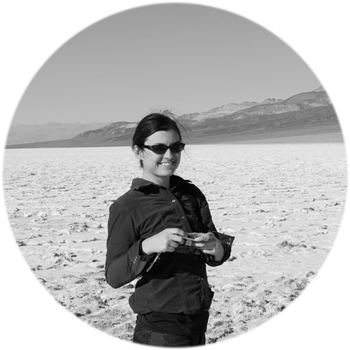
Ph.D. Indiana University, 2016
Current position: NIH NRSA postdoctoral fellow at UNL in the Cressler lab
School of Biological Sciences, University of Nebraska-Lincoln
Manter Hall 424
Google Scholar
Personal Website
My research combines theory from community ecology and evolutionary epidemiology to understand how feedbacks between individual-level and population-level processes shape both ecological and evolutionary dynamics. Ultimately, this research contributes to a more general understanding how global change (in e.g., resources, diet, dissolved organic carbon, UV radiation) influences host physiology and behavior and how these individual-level processes scale up to influence population dynamics, disease epidemics, and parasite evolution.
With the PoE fellowship I am working with Dr. Clay Cressler to examine how changes in resources (diet) influence physiological trade-offs between host defense and basic life history traits in ways that modulate host-parasite evolution. Host physiology governs host defense against parasites, from avoidance of infection via altered behavior or mechanical barriers to strategies that reduce or offset fitness consequences once infected. These energetically-expensive mechanisms all carry different costs and benefits for the host and parasite, and strongly influence evolution. To date, however, most research has focused on only subsets of these interactions. Hence, we lack a fundamental understanding of feedbacks between these different mechanisms. To address this gap, Dr. Cresller and I are combining experiments and theory that incorporates principles from food web ecology and evolutionary epidemiology to study interactions between environmental factors, individual-level traits, and population-level dynamics.
PoE Advisor: Clay Cressler
Thomas Luhring
Ph.D. University of Missouri, 2013
Current position: Assistant Professor of Biology at Witchita State University
Google Scholar
Personal Photography Website
My research investigates interactions between ecology and life-history evolution. My work with amphibians focusses on how life history strategies affect ecosystem processes such as energy and nutrient cycling. Small isolated wetlands can produce tons of amphibian mass (recently metamorphosed juveniles) that moves into the surrounding terrestrial environment as nutrient-rich packets of energy. Similarly, adults transfer terrestrial nutrients and biomass into wetlands during the breeding season (eggs). Life history strategies shape the nutrient content and mass of each of these biomass vectors (eggs, juveniles) and, when combined with trophic interactions, determine the direction, magnitude, and stoichiometry of nutrient and energy transfers between ecosystems.
One of my ongoing projects investigates how body size in a size-structured population of large aquatic salamanders responds to environmental perturbations. This research has given me insight into how long-lived ectotherms can demonstrate patterns of positive body size selection during severe droughts (a pattern counter to that seen in other groups of ectotherms). Longitudinal studies of vertebrates in the field are useful, but come with limitations that are not easily overcome. For example, manipulating climatic variables and studying several generations of vertebrates in multiple replicated populations is generally infeasible.
As a PoE fellow, I will be working with Drs. DeLong and Brassil to continue my line of inquiry into how organisms respond to environmental perturbations, but will utilize the fast generation times and easily manipulated environments of algae and protists. We are primarily interested in how organisms respond to increased climatic variation and changes to resource stoichiometry (C:P ratio). The effects of these factors on body size, population dynamics and thermal performance will be used to inform mechanistic models already in development by the population ecology work group at the University of Nebraska. The multi-generational approach of these experiments will reveal how climate variability and resource stoichiometry shape the evolution of thermal performance curves. These findings and resulting models will contribute to our understanding of how human-altered systems will affect organisms across ecological as well as evolutionary time scales.
PoE Advisor: John DeLong and Chad Brassil
Matt Wilkins
Ph.D. Univeristy of Colorado-Boulder, 2014
Current Position: Postdoctoral Fellow at the Center for Science Outreach at Vanderbilt University.
My research focuses on understanding the processes guiding the evolution of animal communication systems, and how divergence in communication systems relates to speciation. During my PhD, I utilized the recently diverged barn swallow species complex as a model for understanding the role of sexual selection in shaping phenotypes within and across populations. In particular, a three year study within a Colorado population highlights that male-male competition and female choice seem to involve different acoustic and visual signals. My PhD work also characterizes broad patterns of signal variation in feather plumage and male song across 19 sample populations distributed across the Northern Hemisphere, highlighting divergence in one song element (trill rate) among subspecies. A further playback experiment in Colorado demonstrates important interactions between dynamic traits (such as trill rate) and static traits (such as breast feather color) in mediating competitive interactions. Collectively this work provides insight into the evolutionary dynamics of complex sexual signaling at multiple spatial scales.
As a UNL Program of Excellence Postdoctoral Fellow, I will work with Drs. Dai Shizuka and Eileen Hebets to apply network statistical approaches to the study of complex signaling. We will use data on barn swallows from my PhD, as well as new data from a number of Schizocosa wolf spider species in order to draw broad conclusions about the functions of intra- and intersexual selection in divergence in communication systems across diverse animal taxa. Because sexual selection studies have often focused on a small number of traits, whereas signals often comprise many elements and modalities (e.g. visual, acoustic, or olfactory), a network approach to complex signaling offers many benefits for identifying constraints, trade-offs, and the potential for redundancy affecting the evolution of communication.
PoE Advisor: Eileen Hebets and Daizaburo Shizuka
Robert Laport
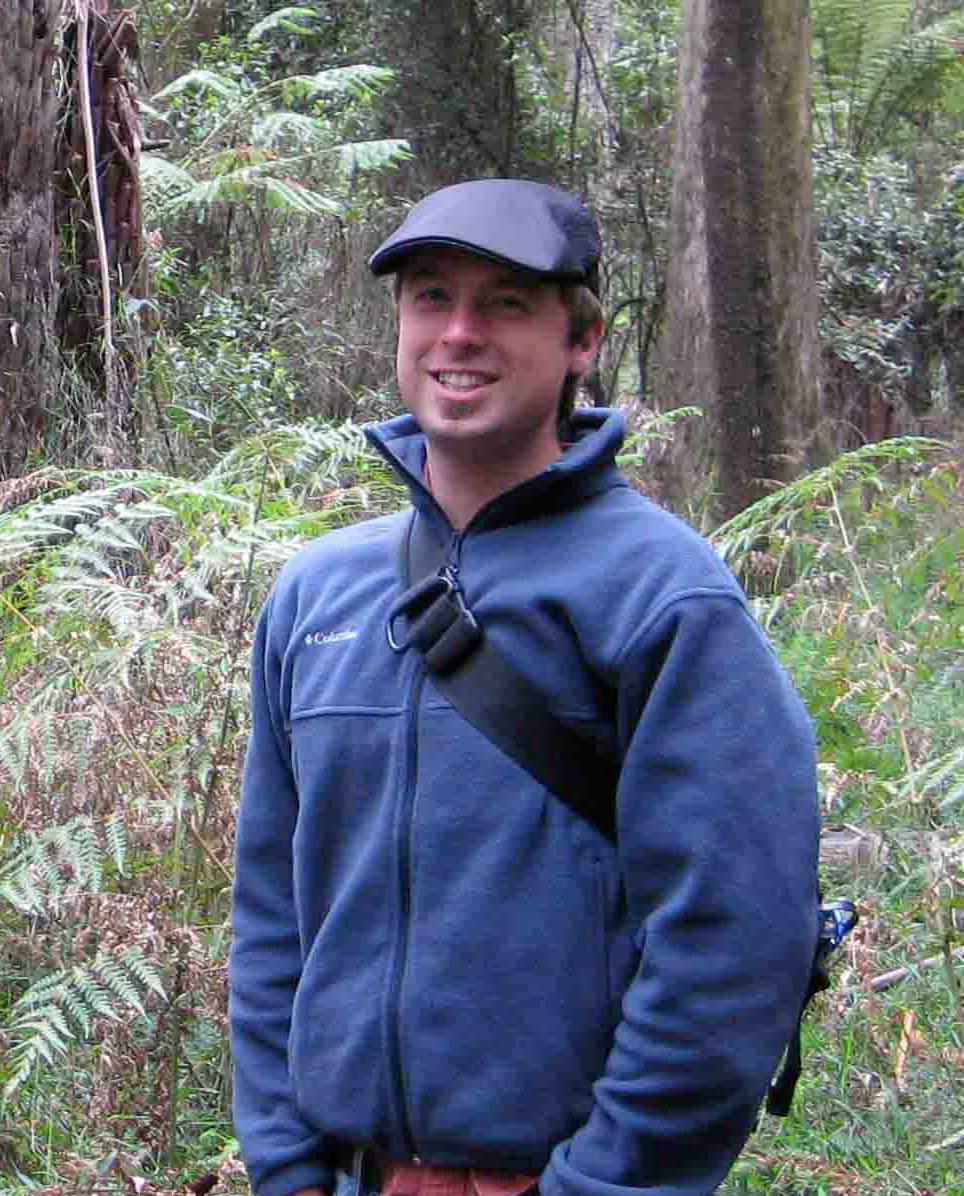
Ph.D. Univeristy of Rochester, 2013
Current Position: Assistant Professor of Biology at Rhodes College
My research interests lie at the intersection of ecology and evolutionary biology, and how ecological and evolutionary processes influence speciation. Primarily, my research has focused on polyploidy (genome duplication) and the role it plays in driving patterns of biodiversity. Polyploidy is pervasive among plants, with well over 70% of flowering plant lineages estimated to have undergone genome duplication at some point in their past. This prevalence suggests genome duplication is important for modulating evolutionary trajectories and biodiversity, however, ploidy levels (i.e. populations differing in chromosome complements) are rarely recognized as distinct species. One of the chief reasons for this is uncertainty over whether polyploidy facilitates ecological adaptation or simply imposes an intrinsic reproductive barrier among populations. To determine the relative importance of ecological and intrinsic genetic processes to polyploid speciation I have been using an integrative approach to evaluate reproductive interactions between recently divergent ploidy levels of the North American desert dominant, creosote bush (Larrea tridentata) in natural settings throughout the Chhihuahuan, Sonoran, and Mojave Deserts.
As a UNL Program of Excellence Postdoctoral Fellow, I am investigating the ecological effects of plant-pollinator interactions to better understand potential and realized gene flow among the ploidy levels of creosote bush.
PoE Advisor: Diana Pilson
Nika Galic
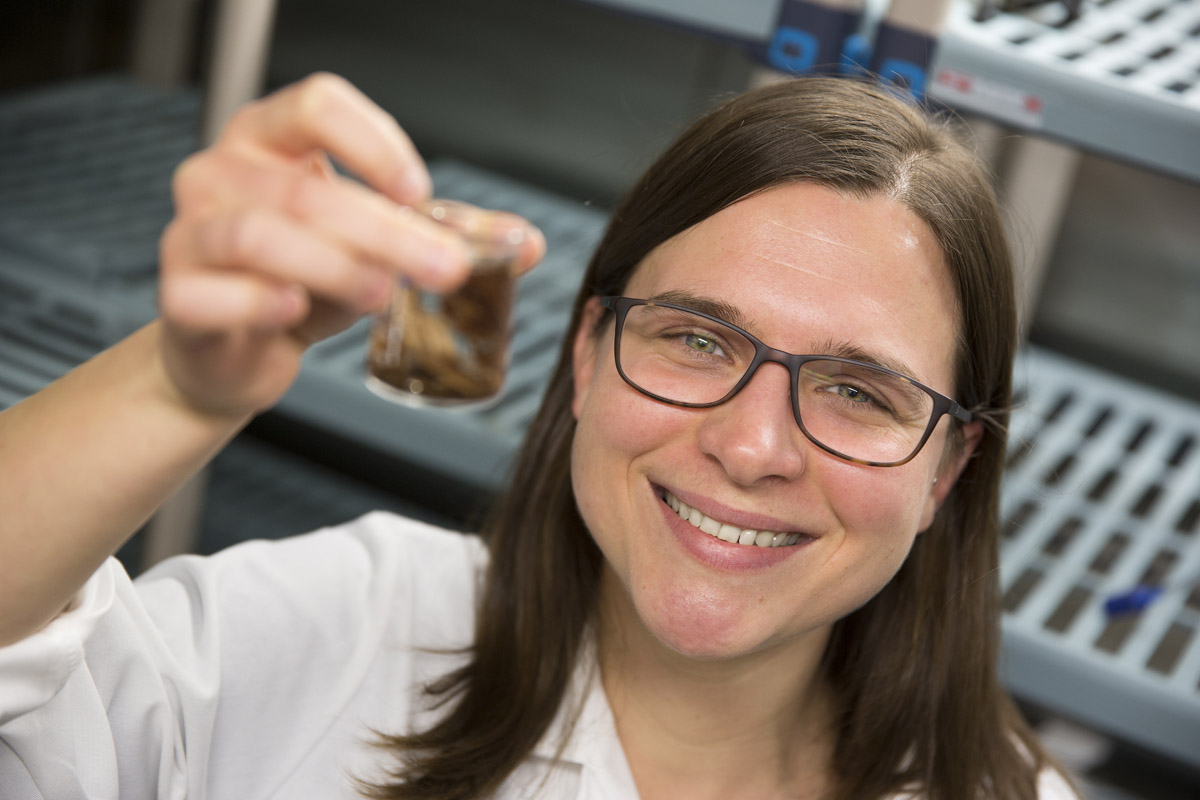
Ph.D. Wageningen Univeristy, The Netherlands, 2012
Current Position: Postdoctoral Researchers at Univeristy of Minnesota-Twin Cities
I am broadly interested in how the ecological systems respond to various disturbances, from individual and population-level responses to consequences on the functioning of the ecosystem. The bulk of my PhD work has revolved around exploring the potential and time to population recovery of various freshwater macroinvertebrate species after chemical and other disturbances. To quantify the relative role of species-, landscape- and stressor-specific characteristics on the recovery potential after disturbance, I developed several individual-based models (IBM) of macroinvertebrate populations.
As a postdoctoral researcher in the Population Biology PoE, I am investigating a wider range of possible disturbances on freshwater ecosystems, by accounting for consequences of global change, including temperature change and altered dissolved oxygen availability. I am specifically interested how these changes, single and in combination impact the energy budgets and metabolism of key macroinvertebrate species and how the impacts at the individual level translate to consequences for populations and ecosystem functioning. To this end, I use a combination of laboratory experiments and population modelling, specifically IBMs.
PoE Advisor: Valerie Forbes
Nathan Muchhala
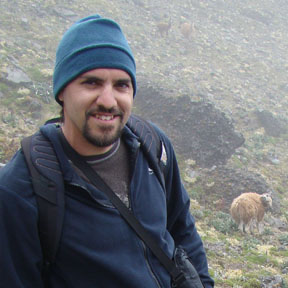
Ph.D. Univeristy of Miami
Current Position: Assistant Professor, University of Missouri-St. Louis
My research deals with the role of interspecific interactions, especially mutualism and competition, in structuring communities and driving diversification. I am particularly interested in bat and hummingbird pollination systems, and combine various approaches including phylogenetics, mathematical modelling, and field experiments. The PoE Fellowship was critical to my career path, as it gave me the opportunity to learn new research techniques including molecular labwork and phylogenetics, to gain teaching experience as an instructor for graduate-level courses, and to further develop my research program and goals.
After the fellowship, I accepted a position as an Assistant Professor at the University of Missouri - St. Louis. My time at UNL led to one publication to date, with various other projects in the works.
PoE Advisor: Stacey Smith
Noelle Beckman

Ph.D. Univeristy of Minnesota-Twin Cities
Current Position: Assistant Professor at Utah State University
I am broadly interested in how local-scale processes affecting individual plants influence patterns at the population, community, and ecosystem levels. Using a combination of experiments, observations, and statistical models, I quantify the relationship between plant attributes and plant interactions with their environment to enable prediction for unstudied species, gain insight into mechanisms for species coexistence, and examine ecosystem function under global change. Because empirical approaches are limited in temporal, spatial, and organizational scales, I use mathematical models to explore macroscopic patterns resulting from processes occurring over multiple scales.
The PoE at UNL gave me several teaching opportunities. In Fall 2011, I designed a writing-intensive undergraduate- and graduate-level seminar on secondary compounds in plant communities. In Spring 2012, I was a guest instructor in Dr. Russo's Ecological Interactions course in which I taught a weeklong section on the influence of herbivory on plant communities, with a focus on population regulation, species coexistence, and evolution of plant defenses. In Fall 2010, I taught a class on plant populations dynamics in Dr. Russo’s course, Introductory Botany.
UNL has many opportunities for postdocs to further their professional career. I attended workshops offered by organizations such as ADVANCE-Nebraska and the Postdoctoral Advisory Council, including ‘Making a Successful Transition to an Academic Career’ led by Dr. Kamau Siwatu, ‘Teamwork and Leadership Skills for Postdocs’ led by Dr. Sharon Milgram, and ‘Interrupting Bias in the Faculty Search Process’ led by Dr. Joyce Yen. In addition, UNL gave me the opportunity to attend 'Transitioning to Faculty Life: A Conference for Postdocs Underrepresented in STEM' organized by the Committee on Institutional Cooperation and held at The Ohio State University.
I also had many opportunities for academic service, educational outreach, presenting my own work and broadening my professional network.
PoE Advisor: Sabrina Russo
Haridas Chirakkal
Ph.D. Univeristy of Pune, India
Current Position: Adjunct Instructor in Mathematics at Nebraska Wesleyan University
A major focus of my research is to understand effects of environmental variation on population and evolutionary dynamics. I try to integrate mathematical models and data to make predictions about demographic (e.g., population abundance) and genetic (e.g., allele frequency) changes. I also work in applied ecology, especially in developing models to study resistance evolution in agricultural pests to pesticides and transgenic plants.
I have enjoyed being a PoE postdoc for the freedom it provided for independent work. During my PoE (2010-12) I also started collaboration with students and faculty in the entomology department which helped in acquiring funds for my future work.
Publications resulting from PoE collaborations
C. V. Haridas., H. R. Prendeville, D. Pilson and B. Tenhumberg. Response of Population Size to Changing Vital Rates in Random Environments. (2013). Theoretical Ecology, 6: 21 - 29.
E. A. Eager, C. V. Haridas, D. Pilson, R. Rebarber, and B. Tenhumberg. Disturbance frequency and vertical distribution of seeds affect long-term population dynamics: a mechanistic seed bank model. (2013). The American Naturalist, 182: 180 - 190
B.D. Siegfried, M.Rangasamy, H.Wang, T.Spencer, C.V.Haridas, B. Tenhumberg, D. V. Sumerford, and N. P. Storer. Estimating the frequency of Cry1f resistance in field populations of the European Corn Borer (Lepidoptera: Crambidae). (2013). Pest Management Science. DOI: 10.1002/ps.3662
A. M. Velez, T. Spencer, A. Alves, D. Moellenbeck, R. Meagher, H. Chirakkal, B.D. Siegfried. Inheritance of Cry1F resistance, cross-resistance and frequency of resistant alleles in Spodoptera frugiperda (Lepidoptera: Noctuidae). (2013). Bulletin of Entomological Research. DOI:10.1017/S0007485313000448
C.V. Haridas, Kathleen H. Keeler, and B. Tenhumberg. Variation in the local population dynamics of the short-lived Opuntia macrorhiza (Cactaceae). (In revision)
PoE Advisor: Brigitte Tenhumberg
Laura Sullivan Beckers
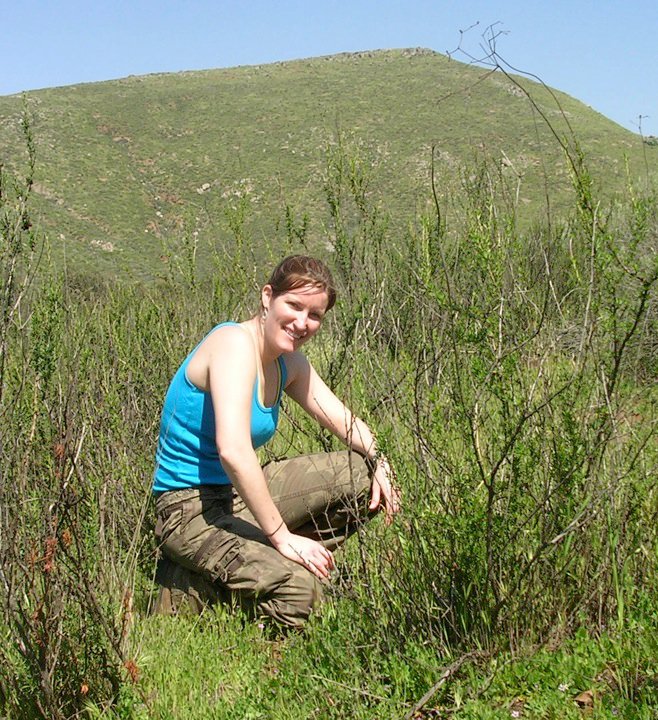
Ph.D. Univeristy of Missouri, 2008
Current Position: Assistant Professor at Murray State University
During my time as a POE fellow, I investigated how the experiences that a male spider has while trying to woo a female effect his subsequent courtship behavior. This research question was developed as an independent (i.e. not tied to an external grant) project with my advisor, Eileen Hebets. She and I both had an interest in how social experiences shape mating behavior, but she was not working on those questions when I joined the lab. Having the support of the POE allowed us to delve into that line of research.
For two years we conducted experiments aimed at uncovering whether males do change behavior with experience, and whether such a change would have a selective advantage. The results of the first experiment have been published in Animal Behaviour, and the results of the second experiment (conducted in the second year of the POE fellowship) are currently in press at the same journal. Our findings have led to many more questions that I hope to answer in the future.
I am currently teaching part-time while caring for my 4-month-old daughter, but am searching for a tenure-track position that includes a research component.
PoE Advisor: Eileen Hebets
Cal Borden
Ph.D. Cleveland State University
Current Position: Associate Professor of Biology at Saginaw Valley State University
My research while at UNL included many questions from systematics to population genetics. I was constructing a data matrix of multiple nDNA loci for 2 general of Neotropical fishes and then assisting with the Euteleostei Tree of Life. There were many visiting students in the Orti lab from South America [Argentina, Brazil], one of whom was also working on the same fish group and developing microsatellites for population-level questions. I developed a local project in cooperation with NGPC on two species of cyprinids living in the Missouri River basin. We then enlisted assistance from various state and federal agencies from MT, ND, and MO for fish collection. This project was addressing population-level differences above and below the 5 major dams on the Missouri River. I would also volunteer with NGPC on the Missouri River. Finally, I tried to spend a day/week at the museum on campus assisting the curator of the zoology division by tending to the collection, and sorting specimens.
While at UNL I taught a seminar in "Aquatic Ecology" at School of Natural Resources (SNR), and then a course in "Molecular Ecology" with 2 other postdocs in the SBS, and co-taught "Ichthyology" with a professor from SNR. I enjoyed the teaching, and I think that was more than the programme required of me.
I was at UNL for 2 years, since then was in Chicago for 3 yrs, and now I am in MI, where I have a position as Assistant Professor teaching zoology for bio-majors, biology for non-majors, and a senior seminar.
PoE Advisor: Guillermo Orti
Viviane Henaux
Current Position: Epidemiologist at ANSES, Lyon, France
Dr. Henaux worked on two projects while at UNL (avian cholera/snow goose ecology and mountain lion migration); additional funding for her work was provided by the US Fish and Wildlife Service. The mountain lion work provided connections for Dr. Powell in Africa (where he was recently on a Fulbright Fellowship). Dr. Henaux taught a graduate course in stable isotope methods.
PoE Advisor: Drew Tyre and Larkin Powell
Federico Hoffmann
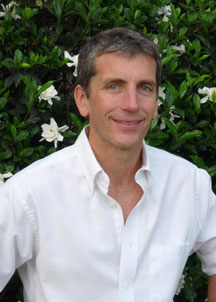
Ph.D. Texas Tech University
Current Position: Associate Professor of Biology at Missippi State University
I am currently an Assistant Professor in the Department of Biochemistry, Molecular Biology, Entomology and Plant Pathology at Mississippi State University. My research focuses on understanding how novel genes contribute to the generation of biological innovations.
The PoE fellowship I held between 2005 and 2007 was instrumental in my career. Briefly, I worked on the evolution of the hemoglobin gene family in mammals. The PoE allowed me to enter the fields of bioinformatics and comparative genomics, provided valuable interactions with several faculty members at the School of Biological Sciences at UNL, and sharply improve my publication record (10 of my publications are a direct result of the work I did with the PoE).
My current research is a direct extension of the research I did while funded by the PoE, and I still work with some of the people I met during my PoE tenure, including my formed postdoctoral advisor, Jay Storz. I think it is safe to say that the PoE was key in my success. In addition to academic success, as a family we enjoyed our time at UNL very much, we made many friends at UNL, and found a supportive community.
PoE Advisor: Jay Storz